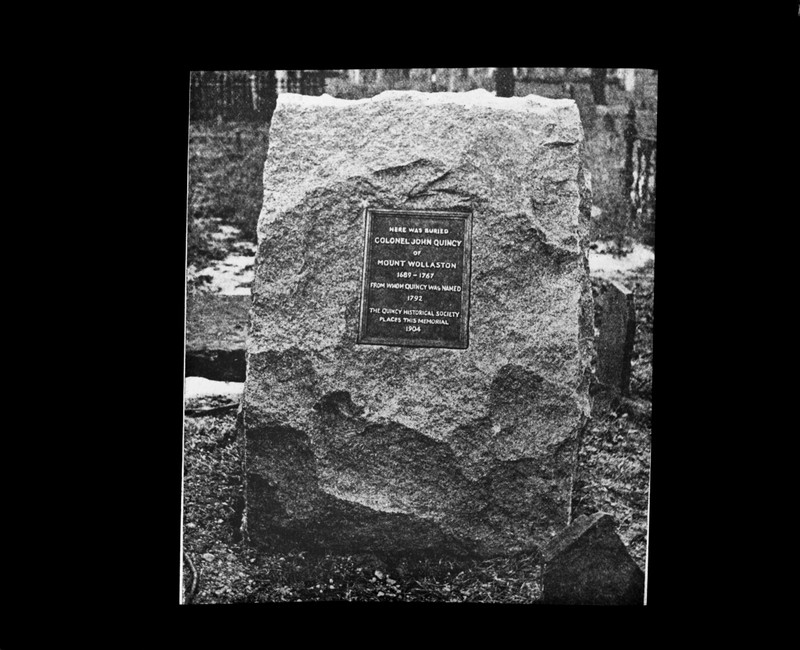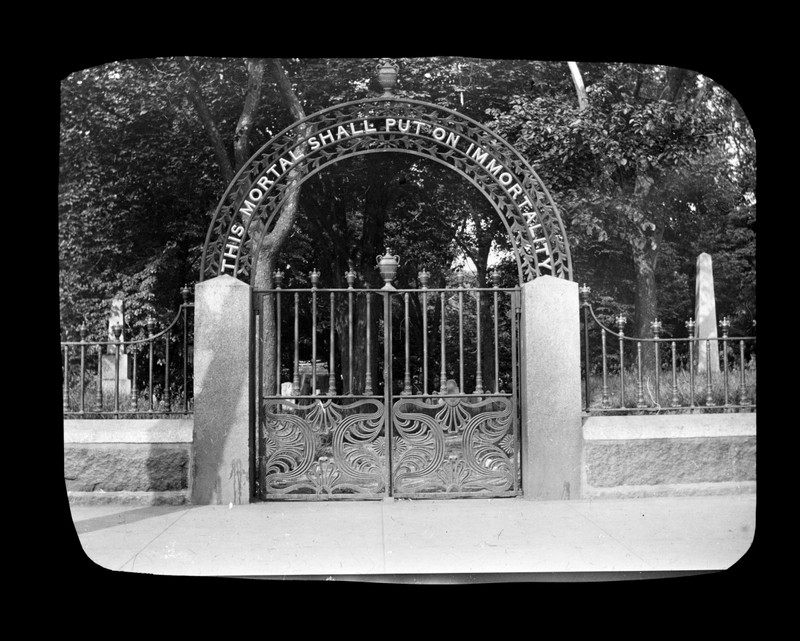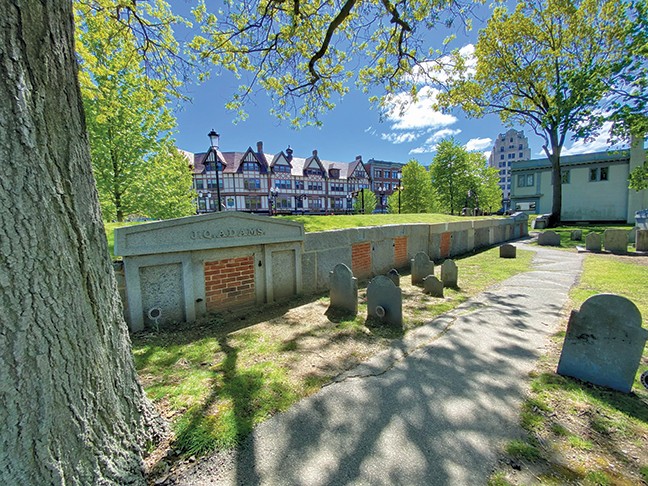Hancock Cemetery
Introduction
Text-to-speech Audio
Hancock Cemetery dates from the earliest years of European settlement (1630s) and was the community’s main burial ground until 1854. The cemetery’s graves include generations of the Adams and Quincy families, Rev. John Hancock, father of the great patriot leader, and veterans of the American Revolution, War of 1812 and the Civil War. In his later years John Adams placed inscriptions on the graves of his ancestors. "This stone and several other have been placed in this yard by a great-great grandson...in hopes of recommend an imitation of their virtues to their Posterity."
Images




.jpg)

Hancock Cemetery

Backstory and Context
Text-to-speech Audio
Quincy’s Hancock Cemetery dates from the earliest years of European settlement (1630s) and was the community’s main burial ground until 1854. Early Puritans took a pragmatic attitude toward death and burial: grave markers were often impermanent or non-existent and cattle roamed freely here. Consequently, many more people are buried here than there are existing markers. Only in 1809 did a group of citizens, including John Adams, purchase the lot and officially donate it to the town, “Provided that ... the town shall never hereafter allow the said burial ground to be used as a pasture or any horse or cattle ... to run at large therein.” The handsome iron fencing is from 1844.
The cemetery’s graves, including generations of the Adams and Quincy families and Rev. John Hancock, father of the great patriot leader and for whom the cemetery is named, provide a perspective on American history. The memorials also offer a chronicle of gravestone art, from excellent examples of colonial winged skulls and cherubim, to Federalist classical motifs and representatives of Quincy’s 19th century role as the national center of granite quarrying and carving. Veterans of the Revolution, the War of 1812, and the Civil War are buried here. Their graves are often identifiable by the flags decorating them.
About “Quincy” and “Braintree”: Some stones in the cemetery refer to the town of “Braintree”. What is now the City of Quincy was originally the North Precinct of the large colonial town of Braintree. As the home to the First Parish Church and other important community institutions, the North Precinct was always the center of activity in Braintree. By 1792 the original town had grown so large and spread out that it began separating into individual towns, with the old original town center becoming “Quincy.”
The cemetery is listed on the National Register of Historic Places. In order to ensure preservation of the inscriptions, rubbings or tracings of the gravestones are not permitted. Please do not leave memorials at gravesites or leave objects within the grounds. Do not sit or lean on graves.
The Hancock Cemetery is undergoing comprehensive restoration and conservation projects. In 2014, over 250 grave markers were cleaned and repaired. In 2016, the historic cast iron fence, gates and arches along Hancock Street were restored. In 2018, 54 tombs were restored, and in 2020 a new rear fence was installed, tree and landscaping work completed and the remaining 29 tombs will be restored. Future preservation work includes survey and replacement of the pathways and landscaping and turf improvements. The cemetery work is made possible by grants from the Massachusetts Historic Commission and Massachusetts Cultural Council as well as funding allocations from the Quincy Community Preservation Committee. The project is being managed by the Quincy Planning and Community Development Department with assistance from the City Parks Department, the Cemetery Board of Managers and Quincy Historical Commission.
Sources
Edwards, William Churchill. Historic Quincy Massachusetts. City of Quincy, 1957.
Pattee, William S. A History of Old Braintree and Quincy, with a sketch of Randolph and Holbrook. Quincy, MA, Green & Prescott, 1878. p. 115.
Quincy Historical Society and Holmes and Edwards Architects. Quincy's Historic Hancock Cemetery (brochure), 2001.
Paula Pecevich
